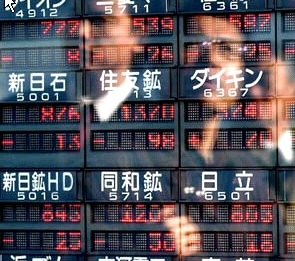Lisa Thompson, Equity Portfolio Manager, Capital Group
Commodity prices have climbed sharply since the 24 February invasion, especially for materials produced in Russia and Ukraine. That includes wheat, oil and natural gas, as well as other key metals such as aluminium, palladium and copper.
However, prices were rising long before the start of the conflict, contributing to inflationary pressures not seen since the early 1980s. So, the crucial question for investors is: Are these price spikes sustainable?
“In the short term, the answer is no,” says portfolio manager Lisa Thompson, “The market has overreacted, and we’re already seeing prices come back down a bit. But, compared to where we were a year ago, commodity prices are significantly higher — and I do think that’s a durable trend.”
“Over the long term,” Thompson adds, “prices are likely to remain elevated due to a number of factors, including rising demand, supply shortages and deglobalisation forces symbolised by the war in Ukraine and strained US-China relations. Higher prices should be expected in a world where free and open trade is in retreat.”
Metals industry poised to shine
From an investment perspective, this has clear implications for the metals & mining sector. It has been a neglected area of the market for more than a decade — even longer if you exclude the last major price spike during the 2008 global financial crisis.
The sector has been undervalued for years and remains so today despite a recent rally in mining company stocks. It is likely commodity prices will remain high for years due to chronic underinvestment by the industry since 2015. The problem is exacerbated by the fact that it takes more time than it did in the past to launch new mining projects.
Thompson explains: “It is a multiyear process where discovery, permitting and funding all take much longer. In price terms, that points to higher highs and lower lows until new investments start to produce results.” This dynamic doesn’t apply to food and other crops because production in those areas can be ramped up much faster.
“All of the big mining companies are undervalued and the market is not thinking enough about the consequences of underinvestment. Valuations, and consensus earnings estimates, assume that commodity prices will decline over the next few years, closer to historical averages. I think that is quite wrong.”
Case in point: Look at the market capitalisation of the world’s seven largest mining companies. Even combined, they do not come close to the market value of a new-economy company such as Tesla. The automaker needs certain refined metals, including nickel, to produce its lithium-ion batters. So much so that Tesla CEO Elon Musk cited access to nickel as one of his biggest production concerns long before Russia invaded Ukraine.
In addition to underinvestment, another factor that could lead to higher commodity prices over the long term is the worldwide push for sustainable energy sources. Electricity, in particular, has become a favoured resource. The expansion of the power grid — along with the rapid adoption of electric vehicles — will require lots of copper, nickel and other key metals.
China: A counterbalance to rising prices?
On the flip side, China’s slowing economy could act as a counterbalance to keep commodity prices in check. As the largest importer of raw materials, China consumes more than half the world’s iron ore, coal and copper supplies.
China’s close trading relationship with the European Union could also expose it to a wartime recession in Europe if the Ukraine war drags on. Moreover, China is dealing with a COVID-19 resurgence that could further hamper the economy as the government renews restrictions on travel and entertainment. Things are likely to get worse before they get better, and a sufficiently bad recession could cause commodity prices to fall.”
Investment implications: Inflation hedge
Commodities are an excellent hedge against inflation. Regardless of where markets go from here, the current price surge confirms, once again, that commodities are an effective hedge against inflation. That’s not surprising since those very commodities — oil and gas, for instance — feed into many aspects of the global economy and can help to fuel higher inflation, which is currently running at a 40-year high.
Historically speaking, energy — especially oil — has moved closely in line with inflation, as measured by the US Consumer Price Index. Since oil is usually a major component of commodity-related indexes, the long-term correlation between commodity prices and inflation is high.





